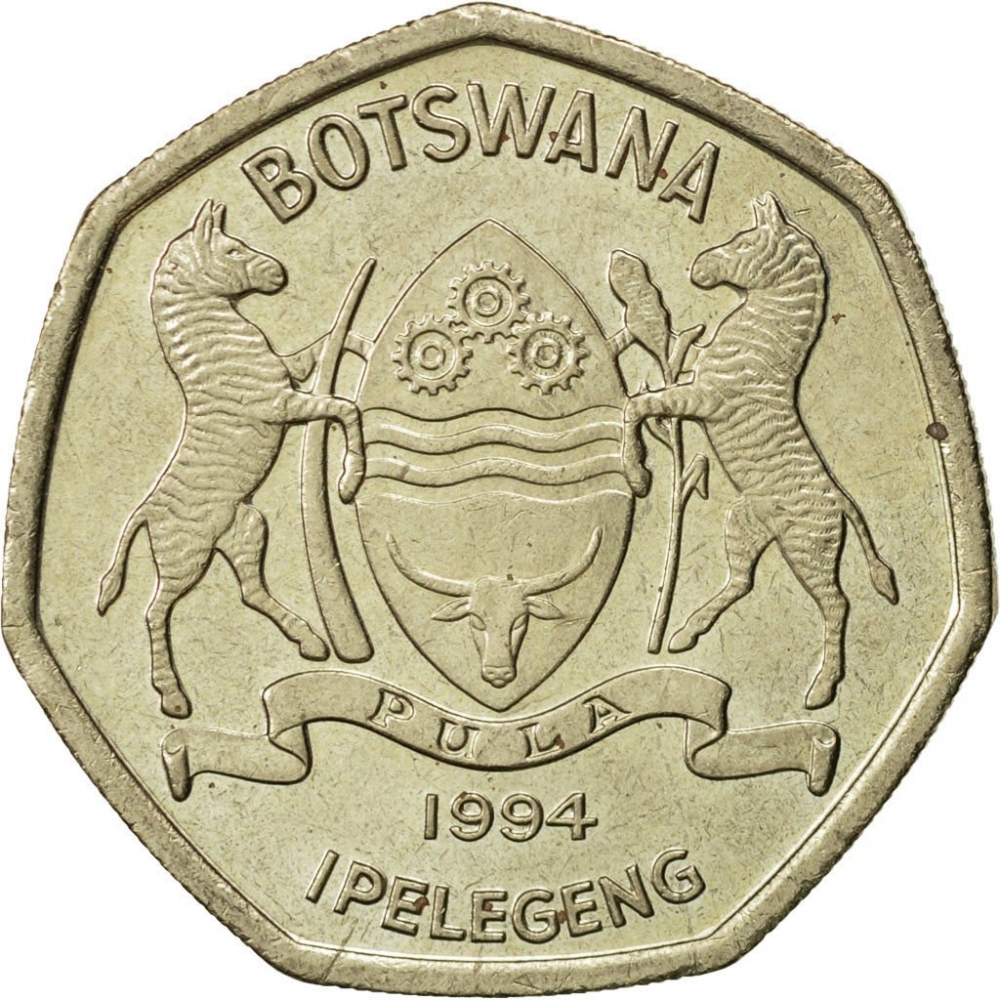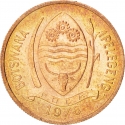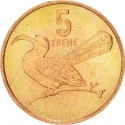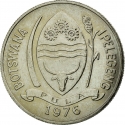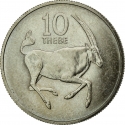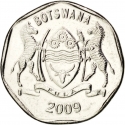You are about to finish your registration. Please check your mailbox (including spam folder). There should be a letter with a confirmation link. Check setting to make sure that your e-mail address is correct.
Send letter again
Obverse

|
Botswana coat of arms, country name above, date and word IPELEGENG below. BOTSWANA |
|---|---|
Reverse

|
Square-lipped rhinoceros left, denomination above. 2 |
| Edge |
Characteristics
| Material | Nickel Brass |
| Weight | 6.03 g |
| Diameter | 26.4 mm |
| Thickness | 2.3 mm |
| Shape |
|
| Sides | 7 |
| Alignment | Medal |
| Mint |
Royal Canadian Mint (RCM)
|
